It’s probably safe to say that every professional grower is finely attuned to the ecological impacts of the rapidly expanding aquaculture industry and proud of its sustainability. And it’s no secret that industry folks are often subjected to close examination under the eco-microscope. One perennial eco bad boy for us has been the ubiquitous, single-use plastic market bag used to deliver product into the hands of dealers and consumers. Unfortunately, a system of reuse for these bags just isn’t feasible, and they tend to be stubborn survivors of the landfill. To address this problem, Ketcham Supply is pleased to introduce biodegradable tubular netting to our aquaculture product lineup. We think biodegradable netting is a great eco-conscious advancement not only for commercial packaging, but also for wild oyster restoration efforts.
The Techie stuff
For regulatory purposes, “biodegradability” is defined as the ability of a material to decompose within 6 months under the types of conditions found in a landfill. Under the harmonized international testing guidelines for biodegradability, our netting material meets both the international ISO 20200 and European EN13432 standards. Certification is carried out by an independent agency according to strict testing protocols, and requires that the plastics break down under industrial-scale composting conditions, leaving no more than 10 percent of the original material in pieces no bigger than 2 mm. In addition, the decomposition process cannot leave harmful residue that inhibits the soil’s composting properties. The material in this netting, a co-polyester, is so tasty to microbes that lighter extrusions can be certified under the even stricter “compostable” standard, which means it degrades within 3 months.
Though not quite on par with a banana peel composting-wise, these tests indicate that the co-polyester will eventually completely biodegrade. That means the only byproduct of the process will be bacterial biomass and CO2 (or methane, since anaerobic bacteria also degrade the polymer). Although biodegradation in a marine environment is not part of certification testing, the fact that polyester readily degrades by both aerobic and anaerobic land-based bacteria means that it will likely degrade in seawater as well. Although testing standards for marine biodegradability do not currently exist, some studies indicate that marine micro-organisms can in fact biodegrade this material. (Meyer-Cifuentes, I.E., et al. Synergistic biodegradation of aromatic-aliphatic co-polyester plastic by a marine microbial consortium. Nature Communications 11, 5790 (2020).)
The real world
It stands to reason then that biodegradable netting would be a great candidate for oyster restoration projects. In these efforts, discarded oyster shells are seeded with spat and then submerged in depleted oyster beds, in hopes of restoring the wild population. Many times, plastic netting is used to contain the spat-on-shell so it can be placed in a manner that compliments the underwater topography and form artificial reefs. Currently the co-polymer is being used in academic, government and not-for-profit restoration projects. Besides being ecologically responsible in using netting that naturally disappears over time, consider how much more attractive the biodegradable feature will be in the grant application process.
To use the product as market bags – which we feel should be LOUDLY displayed as biodegradable so consumers are aware of the invisible benefit – the product is simply cut to the desired packing length and the ends are sealed with hog rings or zip ties, or perhaps better yet, tied off with cotton, jute or sisal twine.
Biodegradable netting has been tested to show it has the same elasticity and strength as plastic netting. Ketcham Supply will be offering the netting in several colors: brown for restoration projects, and green and blue for market bags. As always, we are committed to working with customers and suppliers to provide the best value we can to the aquaculture industry. We remain mindful of our shared resources and continue to be on the lookout for those little things that will help the industry to be viewed in a more favorable light.

